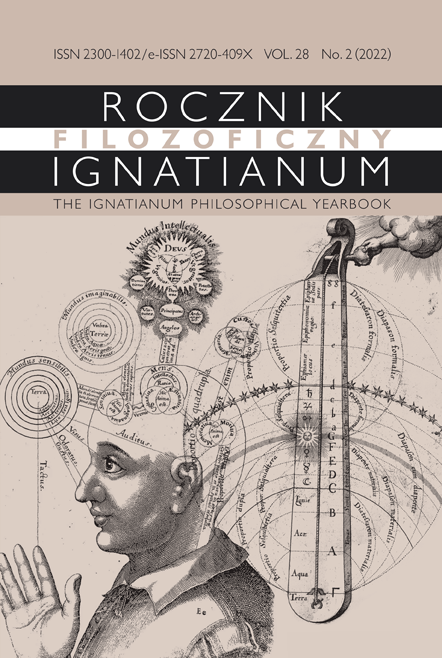Some Remarks on the Opposition: either Pop or Art
Abstract
Nowadays, attempts to systematize art on the basis of its value are being somewhat replaced by descriptive theories that shy away from its evaluations. Moreover, postmodern reflection, changing its attitude to low art, has effectively blurred the differences in the hierarchization of the content of art. A strengthening of the programmatic theses advocated in the avant-garde aimed at invalidating the previous criteria of attitudes assessing the value of art came with the so-called philosophy of postmodernism. The assumptions of postmodernism show a vision of contemporary art that has reached the end of its creative possibilities. In other words, there is no contemporary possibility of saying something new in art, which will not be just a quotation, repetition or recapitulation of what has already been done in art. This kind of hypothesis assumes that human imagination is a set of finite possibilities, and in the process of cultural development we have reached a point where all possible combinations have already been used. In this situation, we can either adopt an attitude of discouragement, or we can reach back to past times and select individual elements by putting them together in an eclectic combination so that they bear the mark of novelty. But, in order to set up this eclecticism, which is supposed to fulfill the semblance of novelty, it is necessary to start from doubt in the category of rational reason, or lack of faith in the natural order of the world. Only then will ubiquitous irony remain the main operative on the ground of culture. And in this spirit, according to the assumptions of postmodernism, one should read the so-called great historical narratives, that is, philosophical systems, religions, social projects and art theory. The narratives developed in history should be treated like great literary tales, which, perhaps, have an interesting plot, but are not true, and do not go beyond casual commentary. The catalog of frequently posited hypotheses selected and discussed in the article indicates their vague and often flawed construction. But this does not imply the impossibility of posing questions about value judgments on the grounds of aesthetics. It should be remembered that certain issues remain constant in evaluation of art. The criterion for evaluating a work of art on the basis of empirical qualities remains in place, thus, what we call workshop issues can pass as the first premise for recognizing, or not, of a work of art as valuable. Similarly, on the basis of a certain visual fiction, values are realized that are not available in the real world, thus, they do not act as a pure repetition of experience from the real world, so they can exist in the world of art. Thus, the value of art can be measured by the extent to which it introduces something that the cognitive subject has not experienced before.
References
Adorno Theodor, Sztuka i sztuki. Wybór esejów, tłum. Krystyna Krzemień-Ojak, wybór i wstęp Karol Sauerland (Warszawa: Państwowy Instytut Wydawniczy, 1990).
Beuys Joseph, Każdy artystą, tłum. Krystyna Krzemień, w: Zmierzch estetyki – rzekomy czy autentyczny?, t. II, red. Stefan Morawski (Warszawa: Czytelnik, 1987), 268.
Carroll Noël, Filozofia sztuki masowej, tłum. M. Przylipiak (Gdańsk: Wydawnictwo Słowo/Obraz Terytoria, 2011).
Eco Umberto, Apokaliptycy i dostosowani. Komunikacja masowa a teorie kultury masowe, tłum. Piotr Salwa (Warszawa: Wydawnictwo W.A.B., 2010).
Kłoskowska Antonina, Kultura masowa. krytyka i obrona (Warszawa: Państwowe Wydawnictwo Naukowe, 1980).
Nowitz David, The Boundaries of Art (Philadelphia: Temple University Press, 1992).
Copyright (c) 2022 Jesuit University Ignatianum in Krakow

This work is licensed under a Creative Commons Attribution 4.0 International License.
The Yearbook only accepts materials for publication that are free of all conflicts of interest, and that in no way involve conflicts over authorship, copyright, etc. The Editors will take action against any cases of plagiarizing, ghostwriting1, guest/honorary authorship2, etc. Where co-authored work is concerned, the Author listed first is expected to take responsibility for the submission, and is required to make clear the contributions of all of the Co-Authors involved. In the event of the publication owing its existence to funding dedicated to this purpose, this fact should be made clear: e.g. in any note of thanks/acknowledgement, or in a footnote, etc. Explicit notification should be given of any form of reprinting, with the appropriate evidence of permission to publish being furnished as required. Any impropriety on the part of Authors/Reviewers risks exposing them to appropriate responses from the relevant institutions.
______
1 This term refers to instances of a person who has made an essential contribution being omitted from the list of authors, or from notes conveying gratitude and/or acknowledgement.
2 This occurs when a person who has made either an insignificant contribution or no contribution at all nevertheless appears on the list of authors.





